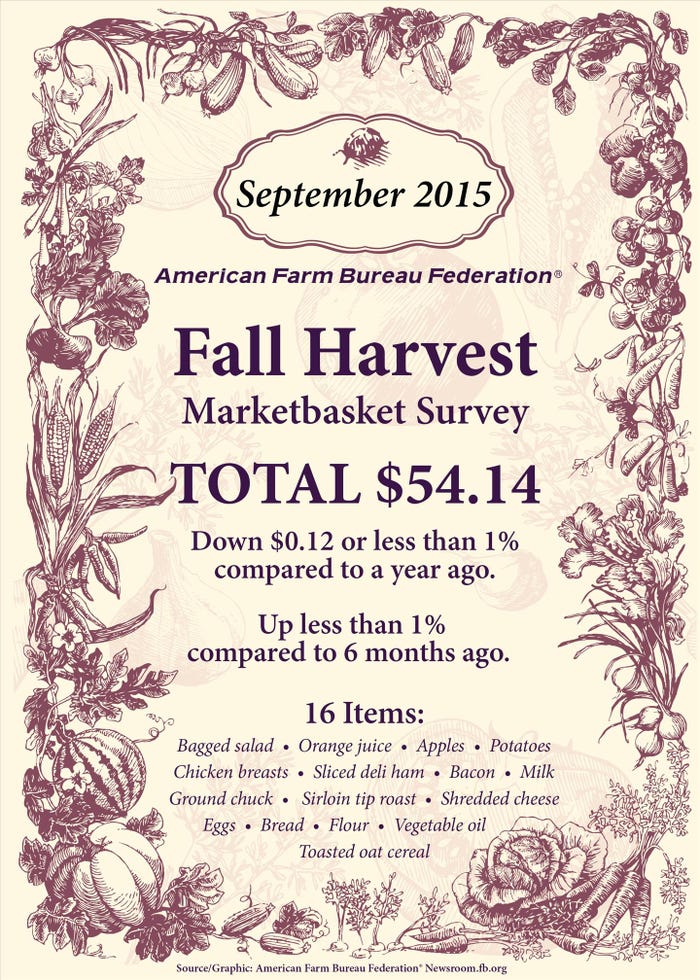Total cost of 16 food items used to prepare one or more meals decreased 12 cents to $54.14.
September 29, 2015

Lower retail prices for several foods, including whole milk, cheddar cheese, and bacon, resulted in a slight decrease in the American Farm Bureau Federation’s (AFBF) Fall Harvest Marketbasket Survey.
The informal survey showed the total cost of 16 food items that can be used to prepare one or more meals was $54.14, down $.12 or less than 1% compared to a year ago. Of the 16 items surveyed, 10 decreased and six increased in average price.
Higher milk and pork production this year contributed to the decrease in prices on some key foods, AFBF said, adding that lower energy prices also accounted for much of the modest decrease in the marketbasket.

Source: American Farm Bureau Federation
“Energy prices, which affect everything in the marketbasket, have been quite a bit lower compared to a year ago.” said John Anderson, AFBF’s deputy chief economist. “Processing, packaging, transportation and retail operations are all fairly energy-intensive.”
According to the survey results, whole milk decreased 17% to $3.14 per gallon, bacon decreased 11% to $4.55/lb., shredded cheddar decreased 5% to $4.56/lb., and chicken breast decreased 1% to $3.42/lb.
Despite decreases for some products, the survey results showed eggs increased 56% to $3.04 per dozen, ground chuck increased 6% to $4.55/lb. and orange juice increased 7% to $3.43 pre half-gallon.
“As expected we saw higher egg prices because we lost so much production earlier this year due to the avian influenza situation in Iowa, Minnesota and some other Midwestern states,” Anderson said.
Price checks of alternative milk and egg choices not included in the overall marketbasket survey average revealed the following: 1/2 gallon regular milk, $2.21; 1/2 gallon organic milk, $4.79; and one dozen “cage-free” eggs, $4.16.
The year-to-year direction of the marketbasket survey tracks closely with the federal government’s Consumer Price Index report for food at home. As retail grocery prices have increased gradually over time, the share of the average food dollar that America’s farm and ranch families receive has dropped.
“Through the mid-1970s, farmers received about one-third of consumer retail food expenditures for food eaten at home and away from home, on average. Since then, that figure has decreased steadily and is now about 16%, according to the Agriculture Department’s revised Food Dollar Series,” Anderson said.
Using the “food at home and away from home” percentage across-the-board, the farmer’s share of this $54.14 marketbasket would be $8.66, AFBF said.
You May Also Like


.png?width=300&auto=webp&quality=80&disable=upscale)
